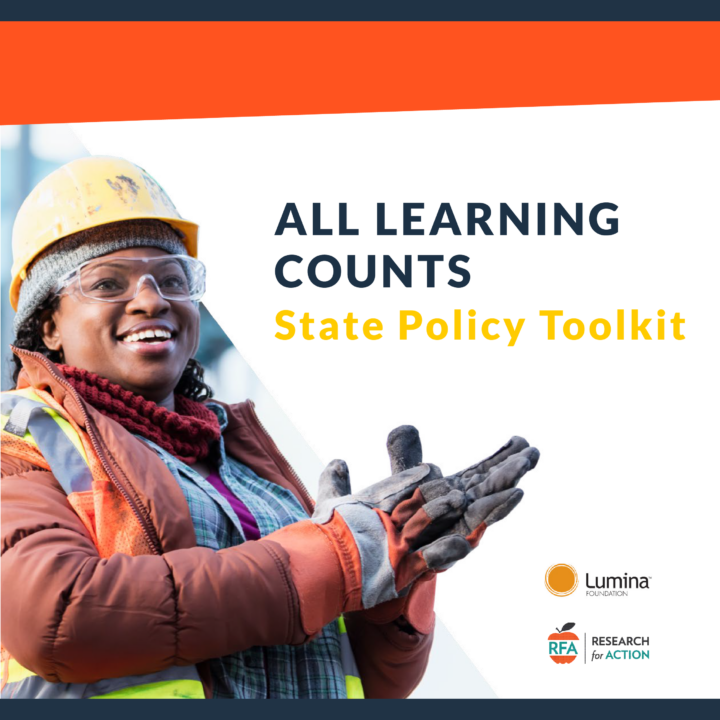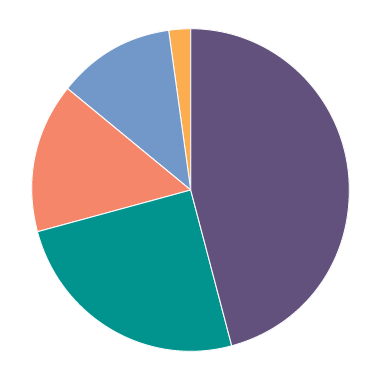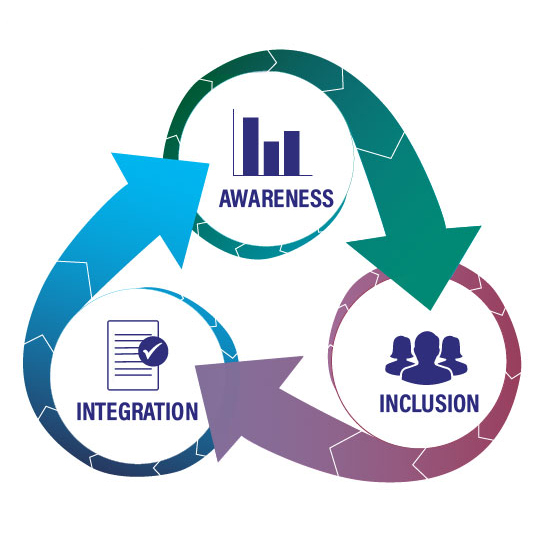The OBF Equity Toolkit provides practical lessons on how states, systems, and institutions work to address equity in the development and implementation of OBF policy. Broken into four Series focused on equity challenges in distinct phases of the OBF policy process, the Toolkit contains short, individual modules that focus on specific topics and provide lessons learned and recommendations for policymakers and institutional leaders to consider. Content is derived from in-depth study of six states (Tennessee, Indiana, Ohio, New Mexico, Oregon, and Kentucky) and 13 institutions in them. See the Research Methods section of the Overview for more information.
This research was conducted in coordination with the Center for Law and Social Policy (CLASP) and supported by a grant from the Bill & Melinda Gates Foundation. Opinions reflect those of the authors, not necessarily those of the Foundation.
Overview
New Mexico began work on an outcomes-based funding policy in 2011. A collaboration between the New Mexico Department of Higher Education, the Legislative Finance Committee, and institutional leaders, the revised Instruction and General (I&G) Funding Formula incentivizes progression and completion, STEMH degrees and degrees earned by financially at-risk students. In FY2019, 6% of funding was tied to outcomes. New Mexico previously experimented with performance-based grants for higher education and has had mandated state-wide performance budgeting since 1999.
Quick facts about OBF in New Mexico
- New Mexico’s OBF policy was championed by Governor Susana Martinez. The formula is often developed through cross-agency collaboration. Each year the New Mexico Higher Education Department submits a formula-based budget request to the Department of Finance and Administration. The Legislative Finance Committee may also present a budget recommendation to the legislature. The legislature reviews both recommendations and has the authority to set the appropriations for institutions and adjust the funding formula.
-
In 2011, the legislature required the Higher Education Department to revise the cost-based I&G formula so that a portion of the funding would be distributed according to an OBF formula through the General Appropriations Act of 2011.[i]
- Institutional leaders were involved in the development of the formula through workgroups. The Secretary of Higher Education convened a steering committee, comprised of institutional leaders to develop the formula, and a technical committee that included institutional researchers and finance staff tasked with testing formula options and running formula scenarios.[ii]
- New Mexico revises the formula through a formalized review process, as needed. When the formula is revised, the formula committee meets, makes recommendations to the state legislature, and the legislature votes. New Mexico changed the funding formula every year for the first five years of implementation, then held it constant for three.
New Mexico State Context
Statewide demographics: 38% White – not Hispanic or Latino, 3% Black or African American, 11% American Indian and Alaska Native, 2% Asian, 0.2% Native Hawaiian and Other Pacific Islander, 3% Two or More Races, 49% Hispanic or Latino.[iii]
Governance structure: Decentralized in the two-year and four-year sectors. New Mexico’s research and comprehensive universities are each governed by a board of regents appointed by the Governor with consent of the Senate. Branch community colleges are governed primarily by the board of regents at the constitutionally created parent four-year institution, but each has a local advisory board that has some decision-making authority. The seven independent community colleges are governed by elected boards.[iv]
Coordinating/governing agency for postsecondary: The New Mexico Higher Education Department serves as a cabinet agency in the executive branch and was legislatively created to administer and enforce laws and to exercise some oversight functions. It is neither an official coordinating nor a governing agency.
New Mexico’s Equity Challenge
Large attainment gaps exist in New Mexico, which is a low-income state with an estimated 19.8% of its population living in poverty.[v] While total credentialed attainment in 2016 equaled 45%, attainment varies across race and ethnicity.[vi]
Table 1. The percent of New Mexico residents aged 25-64 with an associate degree, workforce-relevant certificate, or higher in 2016[vii]
Policymakers and institutional leaders often discuss the state’s entire student body as an equity population. One policymaker explained, “We’re a very poor state. We’re a majority minority. I think the challenges that our state institutions face are not unique to each institution, but really shared across the whole state.” Academic preparation for college and student resources are a challenge across the state, with New Mexico consistently ranking low in K-12 student achievement outcomes[viii] and child well-being.[ix]
Policymakers and institutional leaders report that decisions about higher education funding and OBF policy are highly influenced by political motivations and not driven by a state plan focused on equity. One institutional leader explained, “Political relationships are very important in the state, and they’re responsible, in a lot of ways, for saving some institutions; they’re responsible for punishing some institutions.” Another stated, “The four-year institutions definitely have more political sway and more ability to get legislation to support them within and outside the formula.”
New Mexico’s OBF policy may disproportionately harm small institutions serving a high percentage of underserved students. One policymaker explained, “The biggest [unintended] impact I’ve seen, from a state perspective, is the impact on the smaller community colleges which disproportionately serve the students that would fall under equity measures…The economies of scale come into play and the big institutions are running away with money and the small institutions are hurting. That’s one of the things the state is going to have to struggle with when we look at the formula again and try to identify how we address those issues.” However, a recent review of the funding formula commissioned by the Legislative Finance Committee explains complicating factors that contribute to declining appropriations at small institutions, such as inequity in local funding at community colleges, and “right-sizing” an institution’s share of appropriations to the share of outcomes they produce.[x]
Outcomes-Based Funding Formula and Policy
Table 2. Timeline for adoption and implementation of OBF in Indiana[vi],[vii],[viii]
.webp)
Current funding formula[ix]
For a detailed description of Indiana’s OBF policy see CHE’s website Performance Funding.[x]
Percent allocated through formula in FY19: 6.5%[xi]
Data and outcomes calculated: Six-year period, utilizing three-year rolling averages.
Equity metrics: At-risk degree completion and remediation success (for community college students only). At-risk degree completion is defined as undergraduate degree attainment for low-income, Pell recipient students.
Table 3. Overview of FY2017-19 Indiana OBF formula

*Research universities only.
^Non-research universities only.
Funding formula for 2019-21 biennium
Percent allocated through formula in FY19: 6.5%
Data and outcomes calculated: Six-year period, utilizing three-year rolling averages.
Equity metrics: At-risk degree completion composite measure, which incentivizes degree completion and on-time graduation for at-risk (defined by low-income, Pell recipient) students. The 2019-21 formula will no longer include remediation success.
Table 4. Overview of FY2019-21 Indiana OBF formula











